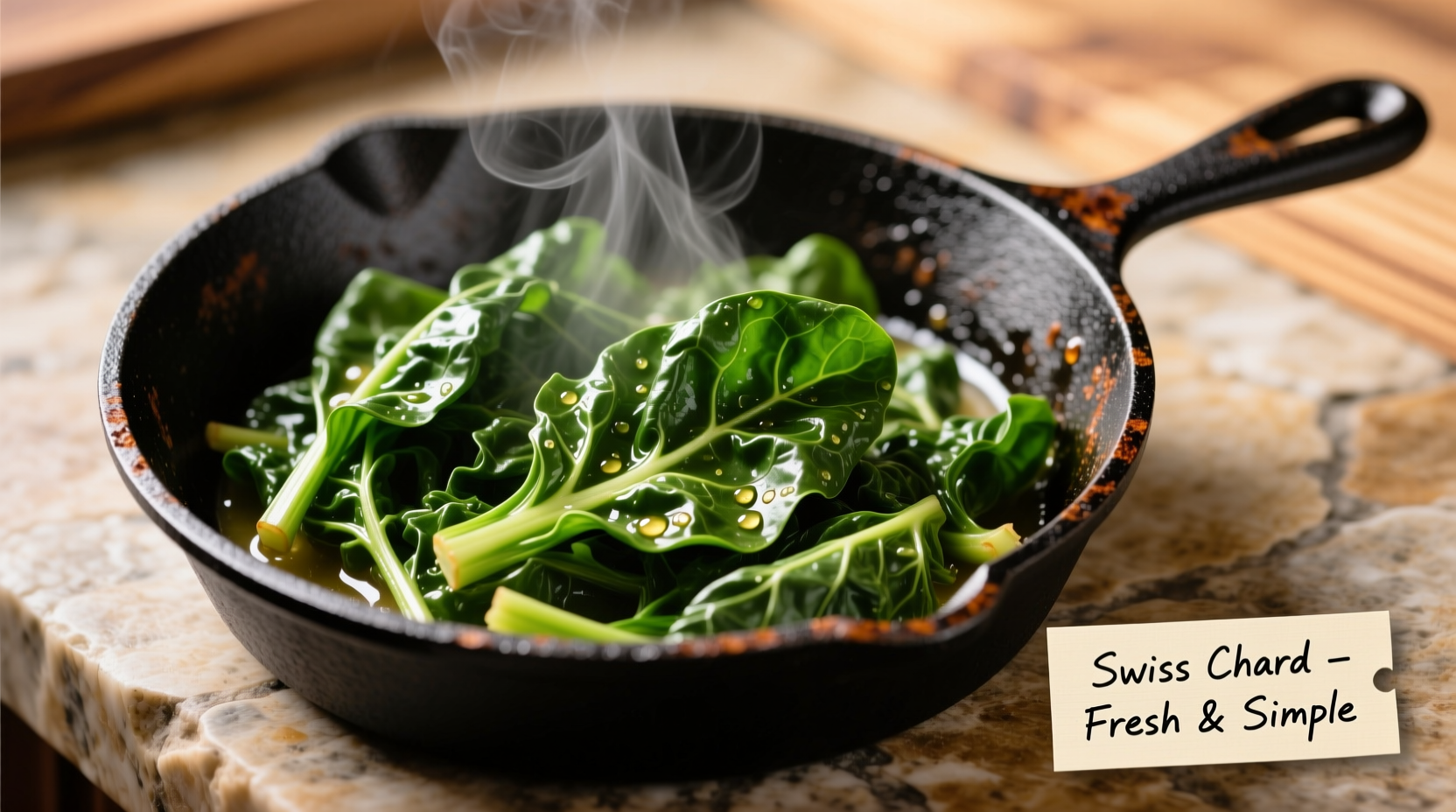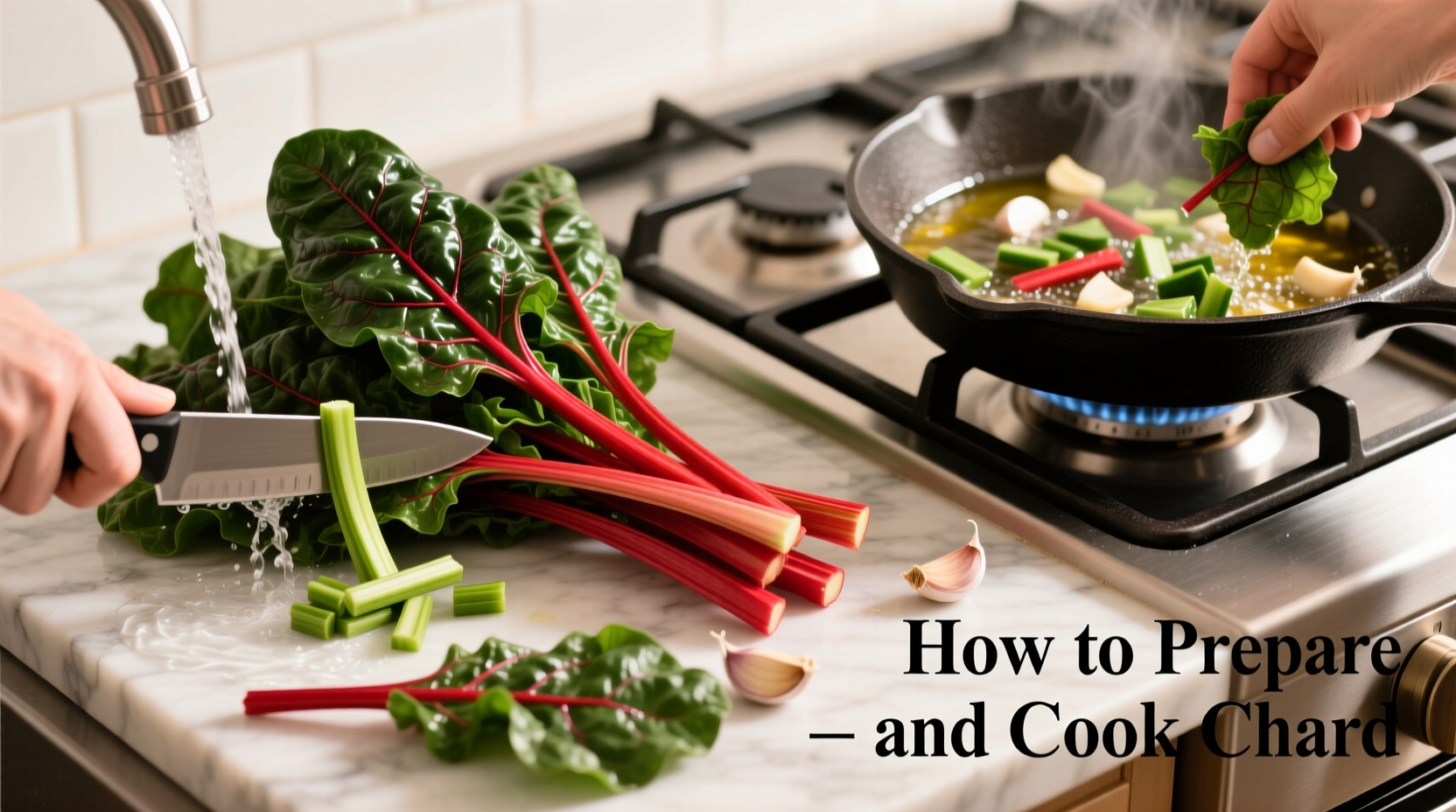Mastering Chard: From Garden to Plate
Swiss chard isn't just another leafy green—it's a nutritional powerhouse that transforms from garden-fresh to dinner-table perfection with the right technique. Many home cooks make the critical mistake of treating chard like spinach, tossing everything into the pan at once and ending up with rubbery stems and mushy leaves. The secret? Understanding chard's unique structure and cooking each part according to its specific needs.
Why Chard Deserves a Place in Your Cooking Rotation
With more than three times the recommended daily intake of vitamin K per cooked cup and significant amounts of vitamins A and C, chard delivers exceptional nutritional value. Unlike many greens that lose flavor when cooked, chard develops a complex sweetness that pairs beautifully with garlic, lemon, and nutty cheeses. Its versatility spans from quick weeknight sides to elegant components in tarts and frittatas.
Selecting the Freshest Chard
When choosing chard at your local market, look for crisp, vibrant leaves without yellowing or wilting. Rainbow chard varieties offer visual appeal with their colorful stems, while traditional Swiss chard provides deep green leaves with white stems. The stems should feel firm and crisp, not limp or rubbery. Avoid bunches with excessive dirt trapped between the leaves, as this indicates poor handling practices.
Proper Washing Technique: Removing Hidden Dirt
Chard often carries significant amounts of soil between its leaves and along the stems. Fill a large bowl with cold water and submerge the chard. Swish gently to loosen dirt, then lift the chard out (leaving dirt at the bottom). Repeat until the water remains clear. For stubborn dirt trapped in stem crevices, use a soft vegetable brush. Never skip this step—properly cleaned chard makes all the difference in your final dish.
| Cooking Method | Stem Time | Leaf Time | Best For |
|---|---|---|---|
| Sautéing | 3-5 minutes | 2-3 minutes | Quick weeknight sides |
| Steaming | 4-6 minutes | 1-2 minutes | Nutrient preservation |
| Roasting | 15-20 minutes | N/A | Stems only, caramelized flavor |
| Blanching | 2 minutes | 30-60 seconds | Freezing or salads |
Perfect Sauté Technique: The Gold Standard
Heat one tablespoon of olive oil in a large skillet over medium heat. Add chopped stems first and cook for 3-5 minutes until they begin to soften. Add two minced garlic cloves and cook for 30 seconds until fragrant. Then add the leaves in batches, stirring until each addition wilts before adding more. Season with lemon juice, salt, and freshly cracked pepper. For richer flavor, finish with a sprinkle of Parmesan cheese. This method for how to cook chard stems properly ensures they reach ideal tenderness while preserving the leaves' delicate texture.

Context-Specific Cooking Guidance
Understanding when to use different chard components is crucial for professional results. The thick stems work beautifully when roasted until caramelized for salads or chopped finely for soups where longer cooking times are required. Tender young leaves can be eaten raw in salads, while mature leaves benefit from quick cooking. When preparing chard for pasta fillings or quiches, blanch the leaves first to reduce moisture content. For stir-fries, cut stems into uniform 1-inch pieces to ensure even cooking. This context-bound approach to how to prepare and cook chard properly transforms your cooking from hit-or-miss to consistently excellent.
Storage Solutions for Maximum Freshness
Store unwashed chard in a plastic bag with a dry paper towel in your refrigerator's crisper drawer. Properly stored, it will remain fresh for 4-5 days. For longer storage, blanch both stems and leaves separately (stems for 2 minutes, leaves for 30 seconds), then freeze in airtight containers. Cooked chard keeps well for 3-4 days in the refrigerator. When reheating, add a splash of water to revive moisture without making the chard soggy.
Avoiding Common Preparation Mistakes
Many home cooks make the error of not separating stems from leaves, resulting in unevenly cooked chard. Others overcook the greens, destroying both texture and nutrients. Using insufficient heat when sautéing causes chard to steam rather than sear, creating a watery texture. When washing chard, avoid soaking for extended periods as this leaches nutrients. For the best results when learning how to clean Swiss chard, handle it gently and use the appropriate cooking time for each component.
Nutritional Benefits of Properly Cooked Chard
According to research from the USDA FoodData Central database, cooking chard actually increases the bioavailability of certain nutrients while preserving most vitamins. One cup of cooked chard provides 622% of your daily vitamin K needs, 108% of vitamin A, and 53% of vitamin C. The magnesium content supports muscle function, while the potassium helps regulate blood pressure. Unlike boiling, which leaches nutrients into water, sautéing preserves more of chard's valuable compounds. This makes properly prepared chard one of the most nutrient-dense vegetables you can add to your diet.
Creative Ways to Use Leftover Cooked Chard
Transform leftover chard into a vibrant frittata by mixing with eggs and cheese. Add to white bean soup for extra nutrition and color. Blend cooked chard with garlic and olive oil for a unique pesto alternative. Stir into risotto during the final minutes of cooking. For a quick lunch, layer on sandwiches instead of lettuce for added flavor and nutrients. Understanding how to store and repurpose cooked chard reduces food waste while expanding your culinary repertoire.











 浙公网安备
33010002000092号
浙公网安备
33010002000092号 浙B2-20120091-4
浙B2-20120091-4